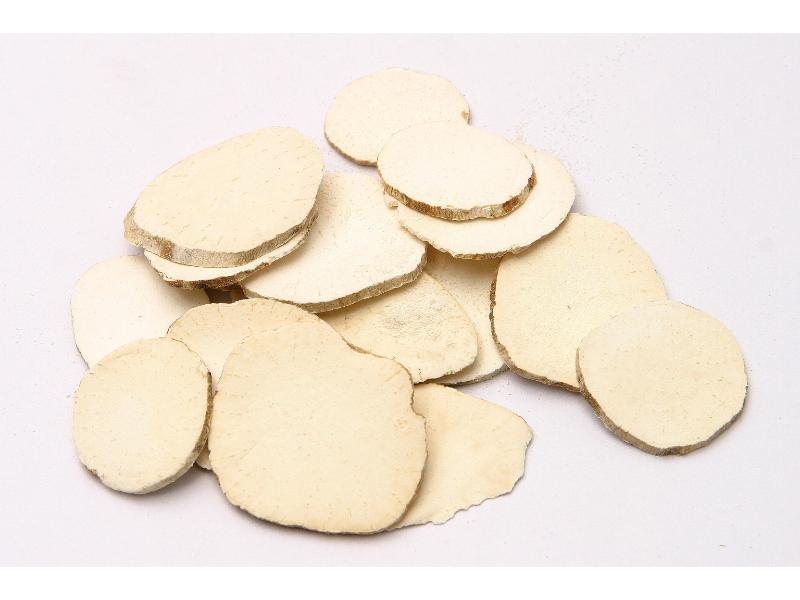Search in medicinals
Trichosanthis Radix
Trichosanthes root
天花粉 〔天花粉〕 tiān huā fěn

Alternate Chinese names: 天花 tiān huā; 天瓜粉 tiān guā fěn; 瓜吕根 guā lǚ gēn; 瓜蒌根 guā lóu gēn; 花粉 huā fěn; 栝楼根 guā lóu gēn; 栝楼粉 guā lóu fěn; 瑞雪 ruì xuě; 屎瓜根 shǐ guā gēn
Kingdom: Plant
Origin in PRC Pharmacopoeia: Trichosanthes kirilowii Maxim.; Trichosanthes japonica Regel. (PRC Pharmacopoeia)
Origin in unofficial sources: Trichosanthes kirilowii Maxim.*; Trichosanthes sinopunctata C.Y. Cheng et C.H. Yueh; Trichosanthes hylonoma Hand.-Mazz.; Trichosanthes japonica Regel.*
Use: Medicinal
Category: Heat-clearing agents / Heat-clearing fire-draining agents
Properties: Bitter, slightly sweet; cold.
Channel entry: Lung and stomach channels.
Actions and indications:
- Clears heat and engenders liquid: Febrile disease with thirst; dispersion-thirst with copious fluid intake.
- Clears the lung and moistens dryness: Lung heat dry cough.
- Resolves toxin and disperses welling-abscesses: Toxin and swelling of welling-abscesses and
sore s.
Dosage and method: Oral: 10–15g; used in decoctions, powders, or pills. It is also used externally for welling-abscesses and
Warnings: Contraindicated in spleen-stomach vacuity cold with sloppy stool. According to modern research findings, it is also contraindicated in pregnancy (because it stimulates uterine contractions when given by injection). Tiān huā fěn comes from the same plant as guā lóu (Trichosanthis Fructus), which is traditionally considered to clash with the aconite products chuān wū (Aconiti Radix) and cǎo wū (Aconiti Kusnezoffii Radix). For this reason, some sources indicate that tiān huā fěn should not be used with these aconite products.
Product description: Trichosanthes roots are cylindrical or irregularly shaped, 5–13 cm long and 1–6 cm in diameter. Most have the cork removed and have a whitish-yellow surface with fine wrinkles. They are firm and farinaceous in substance and do not easily break. The decocting pieces are fine transverse slices, which reveal a whitish fibrous interior with numerous small holes.
Quality: Large fat roots that are fibrous in substance are the best.
Production area: Hénán, Guǎngxī, Shāndōng, Jiāngsū, Guìzhōu, ānhuī, and Korea.
Etymology: 天花粉 (tiān huā fěn), heaven flower powder,
is derived by similarity of sound from 天瓜粉 (tiān guā fěn), heaven gourd powder.
The word powder
highlights the mealy texture of this root.
See: Tiān huā fěn (天花粉 Trichosanthis Radix, trichosanthes root)
Back to search result Previous Next